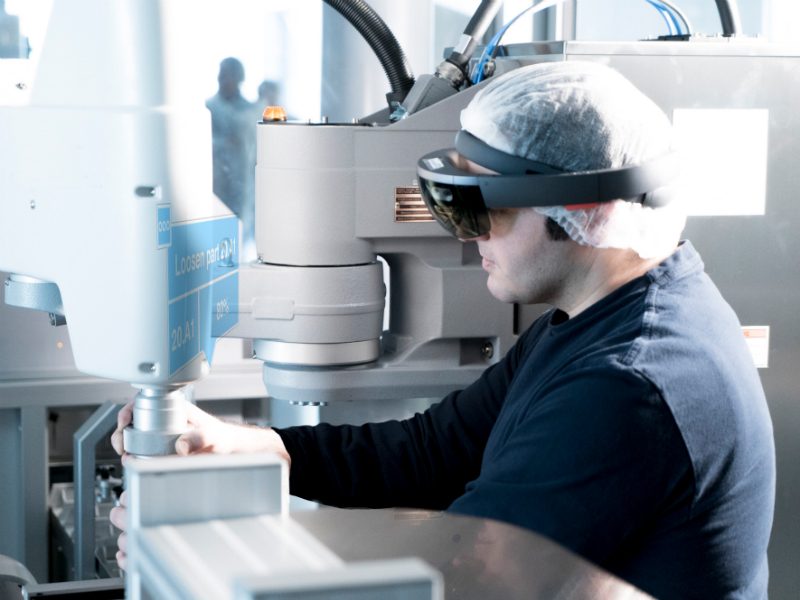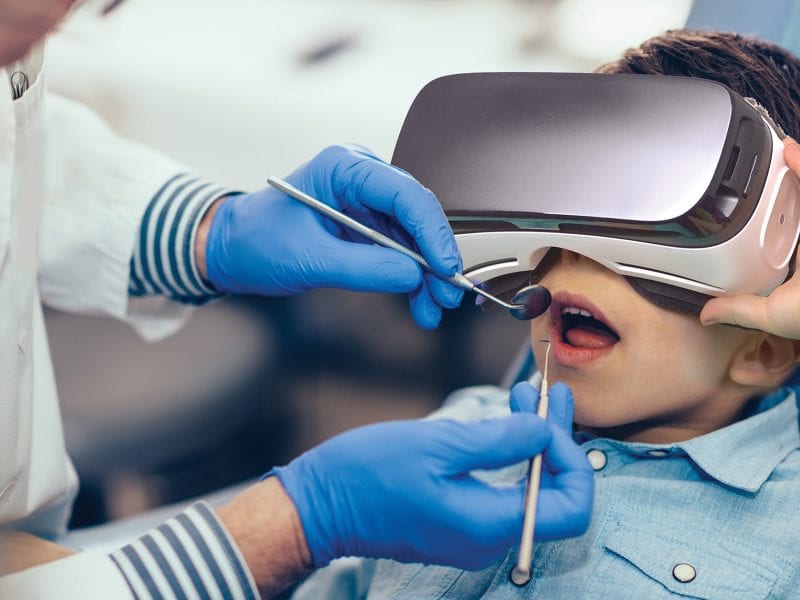
Virtual reality and the glasses that support this technology will be a trend this year and will continue to consolidate over the next few years.
Before we begin, it is important to differentiate between augmented reality (AR) and virtual reality (VR). AR incorporates layers of digital information in the form of images, holograms, or text into our field of vision in front of us.
This does not happen with VR, which completely abstracts us from reality, taking us to other worlds or situations, this experience can be reinforced by adding sounds or physical platforms where we can move.
One of the most obvious uses is the field of video games, but what other applications can there be in the world of medicine?
Medical possibilities
Analyzing the market, technologies and professionals, we realize that the potential is enormous for medicine and education of health professionals. Some of the medical implications of 360º virtual reality would be:
For the treatment of patients
Exposure Therapy (Treatment of Phobias): These phobias sometimes lead to extreme reactions, anxiety attacks or panic. VR allows a therapist to control the degree of exposure of a patient to a particular situation (going out on the street, flying in an airplane, etc.) or an object (spider, snakes, etc.).
Pain management: Doctors hope that distraction therapy through virtual reality could help achieve a reduction of pain and anxiety in treatments that are painful or uncomfortable for the patient. We could take the patient to a relaxing environment and “pull” him or her out of the treatment room.
Virtual robotic surgery: In the field of remote tele-surgery in which surgery is performed by the surgeon in a separate location for the patient.
patient. The surgery is performed by means of a robotic device.
controlled by a remote surgeon, who are watching from their glasses what happens and giving instructions to the robot by means of adapted gloves. Reducing the intervention time and the risk of complications.
Evaluation of brain damage and rehabilitation: Through different tests we take the patient to interact in common situations or that require their interaction, evaluating with greater precision damage or helping in the process of rehabilitation of a stroke.
Possibilities with people with disabilities: Allowing them to explore environments and experiences that they could not live due to their limitations, or teach them new ways of performing daily tasks.
Meditation and Relaxation: For people who suffer from stress or nervousness, they can enter programs to reduce tension and begin to relax when they feel they may have an anxiety attack or crisis episode.

Training of doctors and nurses.
Allows doctors and healthcare staff training scenarios in which they have to interact with a patient or crisis situations (ICU).
Train technicians in emergency and disaster situations without putting anyone’s life at risk.
Surgery training: Learning for medical students and novice surgeons usually involves the use of cadavers and a gradual process of supporting more experienced physicians before assuming tasks and greater responsibilities in surgery. Virtual reality provides another means of practice, without any risk for real patients.
It serves for multiple disciplines: Traumatology, Odontology, Urology, etc.
Glasses
There are plenty of augmented reality glasses on the market, companies like Google want to bring VR around the world and is planning a low-cost ($15) glasses project, with their CardBoard. We can build them easily and supported from our mobile, downloading any App from your App Store (Play Google) and start enjoying the virtual experience.
Google has already sold more than 5 million units of this model. We can also get a little more robust and plastic (DSCVR) glasses for just over 35€.
But for professional and medical environments we recommend more robust spectacle structures that fit perfectly in our head, offering a more realistic and higher quality experience. In this range we have the Samsung Gear VR that require a high-end mobile such as Note 4, but that incorporate sensors such as accelerometer or gyroscope.
Or even more immersive glasses but that require a computer with a good processor and graphics card, here we can find the Oculus Rift or HTC Vive.
Contents and 360º cameras
There are basically two ways to create content for these glasses, on the one hand we can create with 3D design programs our virtual world or operating room. Using real designs or our imagination to create object by object with its texture, behavior and location. For this type of environments we use technology and software such as Unity, 3 DS Max and Maya.
The other way is to record real scenarios in 360º, which will allow us to explore them later from our glasses. Another tendency is to be able to access those places in real time, they would be like the well-known webcams but now in 360º and feel that we are there, in that moment and place, and even be able to interact with other people who are there.
In such a way that we could include a 360º camera in a surgery operation and be able to see it as if we were in the same room.
Google has also presented a project to create this type of cameras, called Jump, a structure of sixteen modules to insert cameras as a GoPro. Each camera will record an area and then with an editing software will merge all the images creating the effect of 360 in high resolution.
We will be able to share our creation in Youtube and from this platform directly to our mobile with a CardBoard.
Interaction and new interfaces
To be able to look at and access visual information in a virtual world or on a stage thousands of miles from where we are is really good. But it is better to be able to interact with it and with the objects or people that are there, one way to do it is by our voice, but we will find that we move our hands and do not see them.
For this, different devices and technologies are being developed that will allow us to recognize our movements and that we can “touch” those objects. The most immersive are the VR pressure gloves, as they not only recognize our movements, but also allow us to feel them, some brands would be Gloveone (199 €) or CyberGlove.
